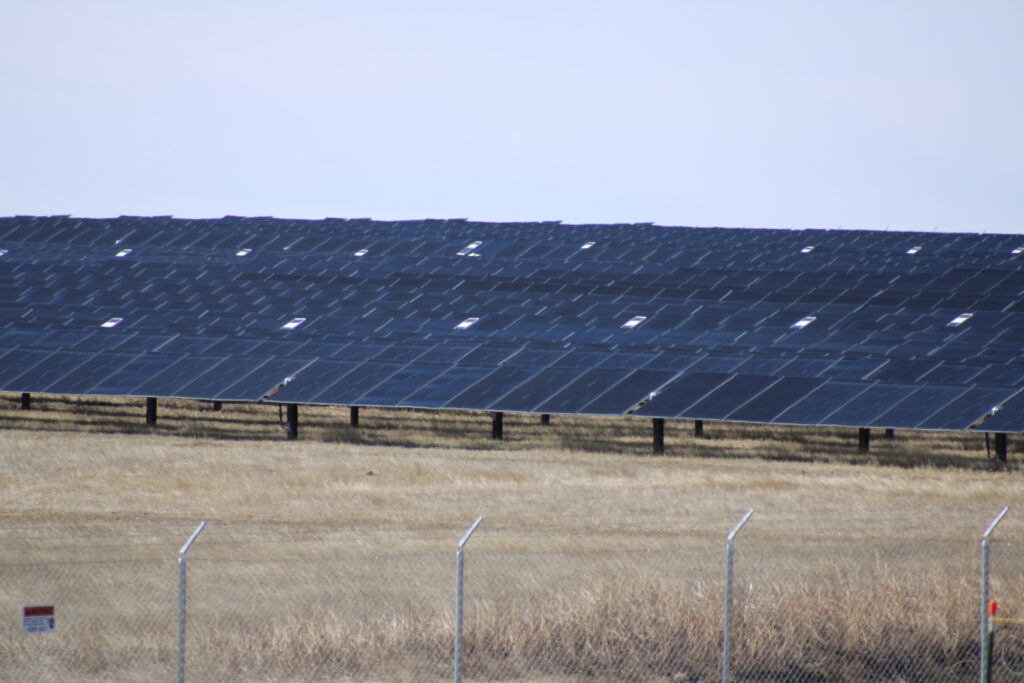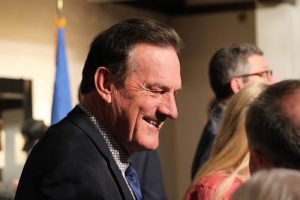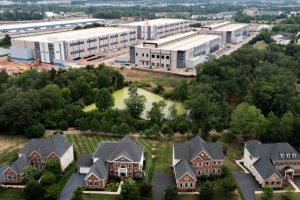A portion of the Wild Springs Solar project near New Underwood, just prior to going operational in March 2024. (Seth Tupper/South Dakota Searchlight)
In South Dakota, independence isn’t just a value — it’s a way of life. We take pride in working hard, running our businesses, farms, and supporting our communities. We also enjoy being as independent as possible when it comes to how we chose to live.
Today, that way of life is being challenged by rising energy costs and increased pressure on our electric grid. One solution is the Solar for All program — a $7 billion grant program through the U.S. Environmental Protection Agency, with $62.5 million earmarked for South Dakota via the Coalition for Green Capital, who applied to administer the program in the state. These grants were awarded last year and were designed to bring renewable and affordable energy to low- and moderate-income households here. However, the EPA confirmed last week that it has formally ended the Solar for All grant program.
Rescinding already obligated federal funds may violate existing contracts and statutory provisions, so it’s possible that legal challenges may occur. If the decision is not reversed, it will be a big loss to growing our independence and the many new opportunities it would provide to communities all across the state.
Trump EPA claws back $7B in solar funding already promised to states
South Dakota faces some of the highest per capita energy use in the country. Our cold winters and increasingly hot summers mean most homes rely heavily on electricity for heat, cooling, and daily essentials. That high demand drives up costs and puts pressure on a grid that wasn’t built for today’s energy needs. When the grid fails, a rural state like South Dakota is hit especially hard — losing heat, refrigeration, and even the ability to water livestock.
That’s why local, reliable energy matters — and solar power is a smart solution. In 2023, Dakota Rural Action conducted a study to look at how solar power could benefit South Dakotans. The results were clear: distributed solar (which simply means solar panels on people’s homes or businesses) reduces utility costs for all customers, even those who don’t have solar panels, by easing strain on the grid and cutting down on expensive peak energy demand.
South Dakota is endowed with an abundant amount of solar radiation. Did you know that we used to be known as the “Sunshine State”? Yet less than 2% of electricity generated in South Dakota comes from solar. So we have an enormous untapped resource here that can be used to generate electrical power.
Another significant opportunity of solar is its economic impact. Developing more solar power means more local jobs right here in South Dakota. From installing panels to managing systems, repairing equipment, and overseeing projects, the solar industry creates good-paying, long-term careers right here at home. Solar for All funding would help expand job training programs, giving more South Dakotans the skills they need to enter this growing field and support their families without having to move away.
Beyond jobs, solar energy keeps more money circulating in local economies. We can generate more of our own electricity and keep those dollars in our local towns and counties. Solar systems can even be installed on farms and ranches, cutting costs and boosting producers’ bottom lines.
And importantly, solar is a clean, domestic resource. South Dakota is already a leader in providing clean renewable energy to our state’s energy mix through wind and hydropower. Solar power complements that strength, helping us stay on the leading edge of energy development while protecting the air, water and land our livelihoods depend on.
As South Dakotans, we know how to take care of our own and make the most of what we have. Investing in solar energy is one more way we can build a stronger, more independent future that supports our families, grows local jobs and keeps our communities thriving.
Solar for All would offer us a unique opportunity to bring the benefits of solar power home to all South Dakotans.
Never miss new commentary: Sign up for our free newsletter.






